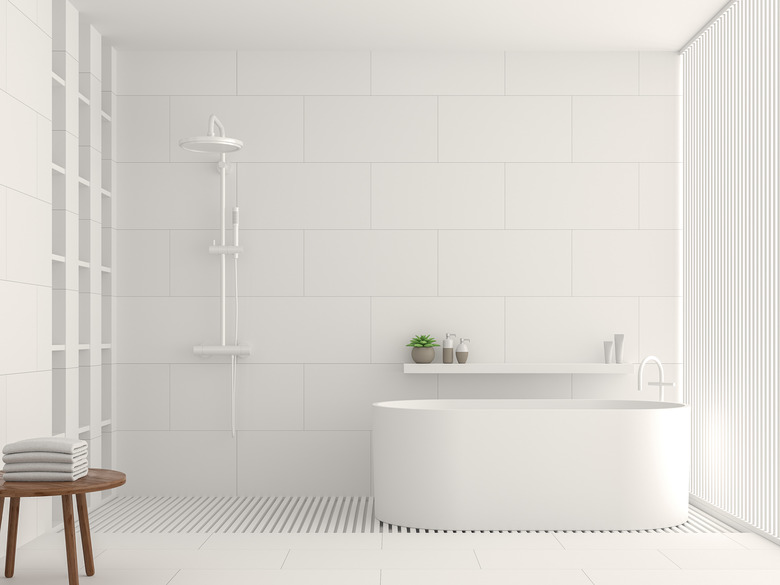How To Fix Water That Keeps Running In A Tub Faucet
We may receive a commission on purchases made from links.
The constant dripping of a leaking tub faucet can be maddening. It can also cause damage to the tub or be an indication of a bigger problem with the plumbing behind the wall. No matter your plumbing skills, removing, fixing and replacing a tub faucet is relatively straightforward.
Shut Down Supply
Shut Down Supply
If you have a separate cutoff valve to the bathroom water supply, turn off the water to that area. Otherwise, shut the water down for the entire house. This shouldn't cause any damage to your home while you work on the faucet. If the fixture doesn't have an individual shut off valve, you'll need to stop the water flowing to the whole home. The shut off valve is usually located on a pipe by the water heater or where the cold water pipe enters the home. This can be outside in warmer climates. Rotate the handle clockwise to turn the water off to the house completely. To relieve pressure, open up a faucet at a lower level of the house while you complete the project.
Removal Run Down
Removal Run Down
Remove the faucet with a screwdriver pried underneath the cover plate. If there is a small set screw on the handle, remove that with an Allen wrench. Most parts will come off easily or need to be unscrewed to reveal the valve in the wall. A tub spout can be removed by gently turning it counterclockwise. To get to the valve, cut out a section of drywall on the opposite side of the wall from the valve and drill a pilot hole from the bathroom side next to the valve. Cut out an even square on the back wall with a drywall saw. Cut the copper pipe and take out the stringer with the old valve attached with a reciprocating saw. Make sure the valve you replace it with comes out the correct distance from the wall, has two inlet channels for the hot and cold water and is mounted to a stringer. Attach the female adapters to the pipe and solder copper fittings for a leak-free connection. Measure and cut new section of pipe to fit the new valve and that the hot and cold pipes run to the correct inlets. Attach the new hardware, spout or shower head according to the manufacturer's directions.
Safety and Tips
Safety and Tips
A cloth over the shower drain will block small parts from falling into the opening. Cardboard, a blanket or other protective sheeting on the floor of the tub can keep it free from marks, dents or chips from falling parts or tools. Wrap a cloth around the connection before removing with a wrench to protect the finish and keep it from turning inside the wall. Always wear safety goggles and gloves when handling sharp pipes and fixtures.
